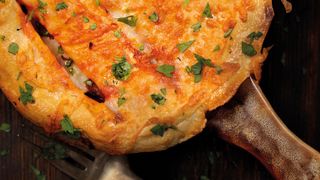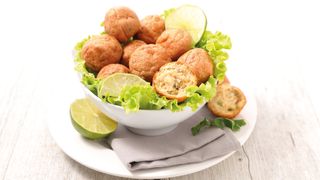Eat Like People In A Blue Zone For A Long Life
Want to live to be 100? People in seven places around the world do just that – and we have their dietary secrets
Can you eat your way to a long life? People in a handful of regions across the globe apparently do. Author Dan Buettner identified seven so-called “blue zones” – places where residents often live past 100 – and analysed the factors that may explain it. Here are the very basic principles followed by citizens of blue zones.
The diet
- Plant-based, though not entirely vegetarian
- Lots of legumes – beans, lentils, peas
- Mostly organic and local
- Heavy on wholegrains
The lifestyle
- Not much smoking
- Close family
- Regular social engagement
- Frequent moderate physical activity
Pick some favourites from each and start beating the odds.
Ikaria, Greece
In Diane Kochilas’s cookbook on Ikaria’s food, she called it “the island where people forget to die”. It’s a hotbed of old-agers who follow a Med-type diet but eat less meat than most Greeks, farm or forage many foods, and evidently bonk like bunnies into their twilight years.
Key foods: Wild greens, olive oil, chickpeas, lentils, black-eyed peas, lemons, goat’s cheese, potatoes, tomatoes, wild mushrooms, sage, rosemary
Dish to try: Hortopita: filo pie made with wild greens

Okinawa, Japan
Why such long life among Okinawans? It could be their superfood intake: turmeric is a favourite here, as is bitter melon (aka bitter squash or balsam-pear) – both thought to be disease fighters. Most foods are stir-fried quickly in minimal oil.
Key foods: Brown seaweeds (hijiki, wakame, kombu), bitter melon, turmeric, tofu, sweet potato, pork, garlic, green tea, brown rice
Get the Coach Newsletter
Sign up for workout ideas, training advice, reviews of the latest gear and more.
Dish to try: Goya chanpuru: stir-fried bitter melon, egg, tofu and thinly sliced pork

Sardinia, Italy
Carb-loading for long life? Sardinians eat tons of pasta and wholegrain breads – even their famed soup, zuppa gallurese, is a sort of bread casserole. Other factors could be the omega 3s in shellfish and dairy or the plentiful polyphenols in the local red wine.
Key foods: Shellfish (clams, mussels, lobster), sheep’s and goat’s milk, tomatoes, almonds, fava beans, chickpeas, flat bread, saffron, fennel, red wine
Dish to try: Fregola sarda con arselle e zafferano: semolina pasta with clams and saffron

Southern Sweden
Scandinavia’s quality of life (low crime, good healthcare and social security) offers some non-dietary reasons for longevity. Still, there’s something about the hearty cuisine of Sweden’s Öland, Småland and Skåne provinces (perhaps the flavonoid-packed berries) that keeps them hanging on.
Key foods: Wholegrains (rye, buckwheat), oily fish (salmon, herring), berries, peas, oats, yogurt, root vegetables
Dish to try: Fiskbullar med rotmos och ärtor: fish balls with mashed swede and peas

Nicoya, Costa Rica
This Costa Rican peninsula’s diet is similar to the rest of Latin America’s but with a few key differences. The fruit of its peach palm tree is said to fight cancer, while its wild ginger is a potent anti-inflammatory. Plus, little milk or processed food is consumed.
Key foods: Black beans, corn tortillas, winter squash, ginger, eggs, yucca, plantains, yams, tropical fruits (bananas, papaya, mango, guava, peach palms)
Dish to try: Gallo pinto: rice, black beans, fried egg and corn tortillas

Loma Linda, California
This small city 60 miles east of LA has a large concentration of Seventh Day Adventists, who – believing the body and soul to be one – spurn meat, most rich foods, booze, cigs and caffeine. But some do eat fish – and sorry, vegan Adventists, but pesco-vegetarian Adventists live longer than you do.
Key foods: Wholegrains (oats, barley, quinoa), beans, lentils, peas, chickpeas, citrus, wholewheat bread, almonds, soy milk, salmon, avocado
Dish to try: Black-bean burger with avocado and tomato

Rosemary and time
The diet of the seventh blue zone, the town of Acciaroli, is like that of most of southern Italy but with one addition: wild rosemary, eaten every day. Its intense aroma suggests it has even more antibacterial, antioxidant, anti-inflammatory and circulatory-boosting properties than ordinary rosemary. Bonus: dried rosemary retains most of the nutrients of fresh.
